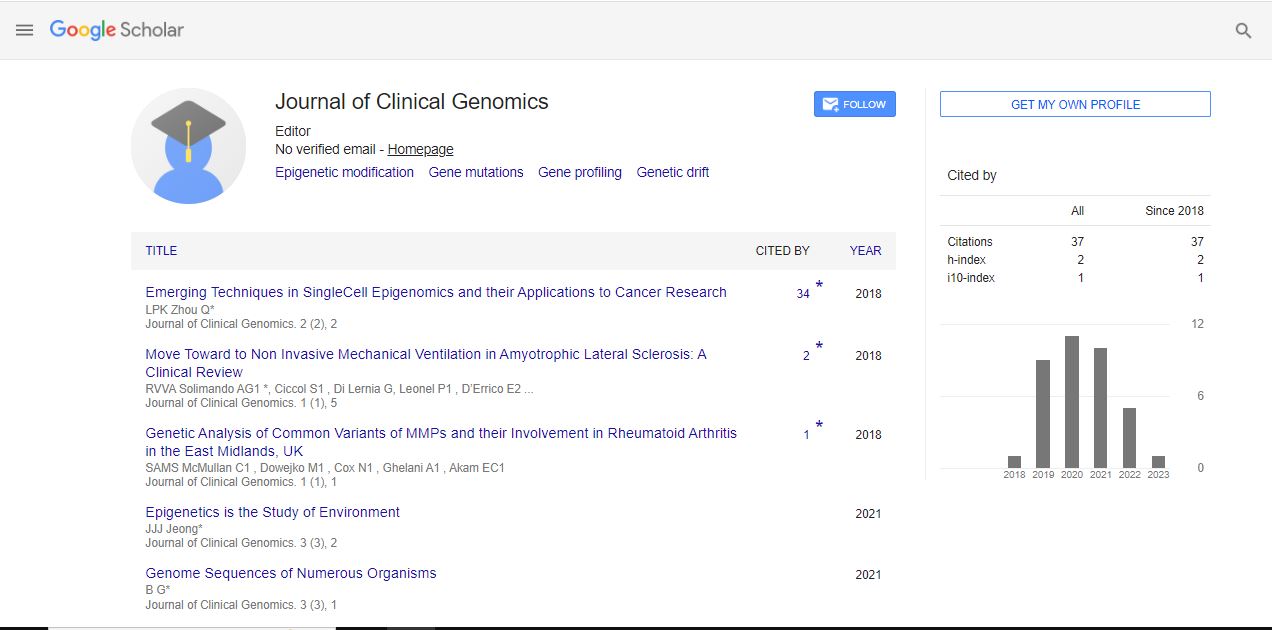Commentary, J Chromatography Res Vol: 4 Issue: 1
Principles and Techniques of Chromatography
Tuzimski T*
Department of Physical Chemistry, Medical University in Lublin,UK
*Corresponding Author: Tuzimski T Department of Physical Chemistry, Medical University in Lublin,UK, E-Mail: tuzimski@ch.med.uk
Received: 09 December, 2021; Accepted: 23 December, 2021; Published: 30 December, 2021
Keywords: Mobile phase, motographic techniques,
Introduction
Chromatography is the technique which we used to separate two mixtures/ two solvents. Here we have two different phases; Column phase and Mobile phase. The solvent which is dissolved in the fluid like gas called as mobile phase and this liquid where it carriers out of the system a capillary tube or column called column phase. The matter or the fluid which is constant in the tube is stationary phase, this is constant. Different phases have different affinities; whereas different molecules will stay longer time and some molecules will stay shorter time in this stationary phase depends on their affinities and interactions with their molecules. They can move to different places with different velocities that can cause to separate phases. The partitions are based on the different phases and liquids in mixtures. These terms also called as partition coefficient and that results in differential retention on stationary phase and affects to the separation phase. This may be an analytical method or an preparative method, main reason for this preparative is to separate the components of mixture in the form of purification. Whereas analytical chromatography is usually done normally with the lesser amounts of materials to measure the both proportions in a mixture and that are having mutual exclusive concentrations.
Types of Chromatography: In general there are different type of chromatographic techniques depends on the method and experimental areas we are using, some commonly used are Column chromatography, Paper chromatography, Thin Layer chromatography, Planar chromatography, Gas chromatography, Displacement chromatography, Liquid chromatography, Affinity chromatography.
1. Column chromatography: Here in this technique we are using to separate the stationary phase and column phase in tube. This technique is very rare and it is very similar to the traditional chromatographic techniques. In this techniques the solution is going to separate in 20 minutes with high pressure and when compared with other methods it is old one.
2. Paper chromatography: In this technique we are going to place a small sample solution into chromatographic paper strip and insert a dot or a sample in that paper, after placing the dot need to place the strip into added solvent container and seal it. As the solvent rises to the top of the paper and stops at one end, it will start the travel and meets to the mixture part of solvent. In this we need to use the cellulose paper or an polar substance paper.
3. Thin layer chromatography: Also called as TLC, it is commonly used technique to separate the mixtures and biochemical. It is very similar to paper chromatography, here instead of using the paper we are using the stationary phase absorbent like silica gel, and alumina, or cellulose substance. It has different samples and that can be separate simultaneously. When compared to the paper it has fasters run of samples and time period is fast. for faster results and lesser sample solutions TLC technique can be used.
4. Planar chromatography: it is a technique where plane of a paper is serves and saturation levels of a substance in stationary phase can be supportive and it can spread in the plate of chromatography. different samples of different solutions to observe how strong the solutions are going to interact in this phases. The specific retention factor of chemical or samples can be used to identify the different unknown substances.
5. Gas chromatography: Also called as gas liquid chromatography GLC, it is carried out in a column phase, which is usually packed in a capillary tube. Capillary columns are usually gives the far resolution and these are more expensive, and used widely. More useful for the complex type of mixtures. These can be split into different classes; PLOT( porous layer open tubular), WCOT(wall coated open tubular), SCOT(supported coated open tubular). It is based on the partition equilibrium. The stationary phase is inserted into the mobile phase with in the small diameter column.
 Spanish
Spanish  Chinese
Chinese  Russian
Russian  German
German  French
French  Japanese
Japanese  Portuguese
Portuguese  Hindi
Hindi 